Abstract
The sporulation of Saccharomyces cerevisiae in the presence of [2-13C]acetate was studied by 13C NMR spectroscopy. The fate of 13C label was analyzed in vivo and in cell extracts. During the first 4 hr of sporulation the major metabolite produced from [2-13C]acetate utilization was glutamate. From the labeling pattern observed it is concluded that both the tricarboxylic acid cycle and the glyoxylate cycle are operating. After about 4 hr trehalose is made. Comparison of the doublet/singlet ratios for C-1,1(1) and C-6,6(1) of trehalose shows a steady drop in the ratio of C-1, C-2-coupled species over trehalose labeled only at C-1 in the C-1, 2 segment of the molecule. The negative correlation of this ratio with that for the C-5, 6 segment indicates a cycling of glucose through the hexose monophosphate shunt. Subsequently fatty acid biosynthesis commences. Large amounts of saturated fatty acid were made. There were conspicuous differences observed in the metabolism of [2-13C]acetate between sporulating and vegetatively growing cells.
Full text
PDF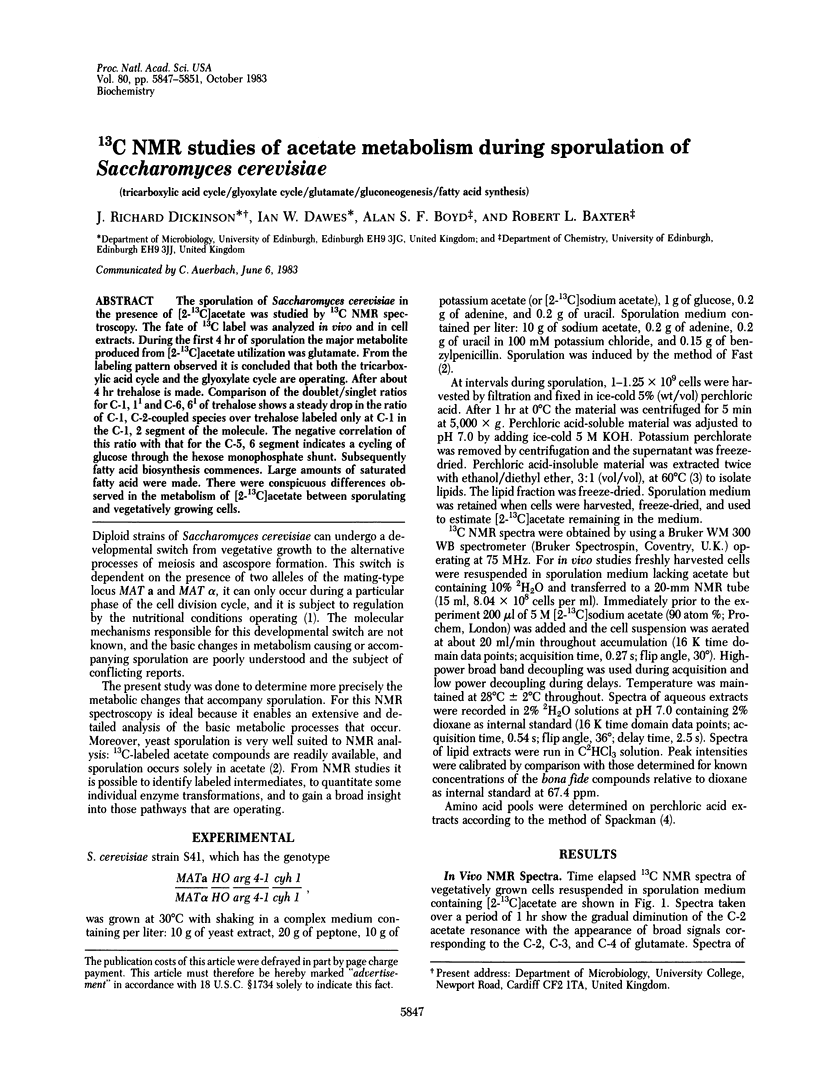
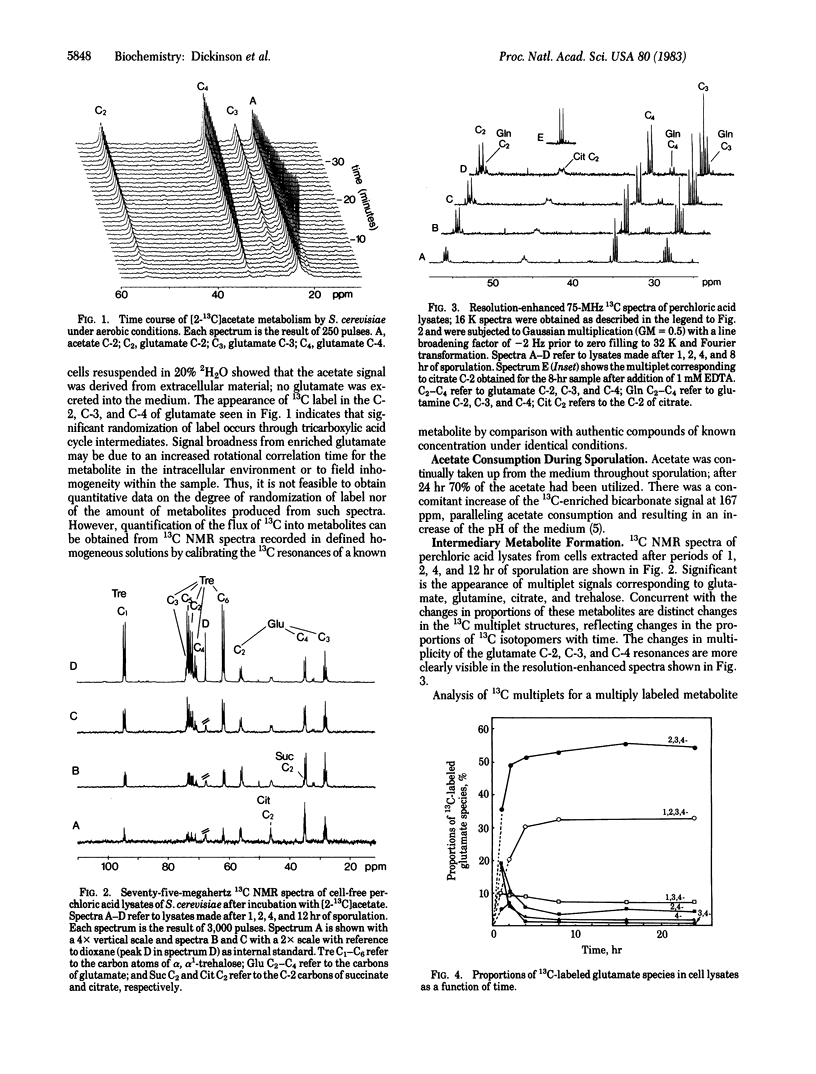
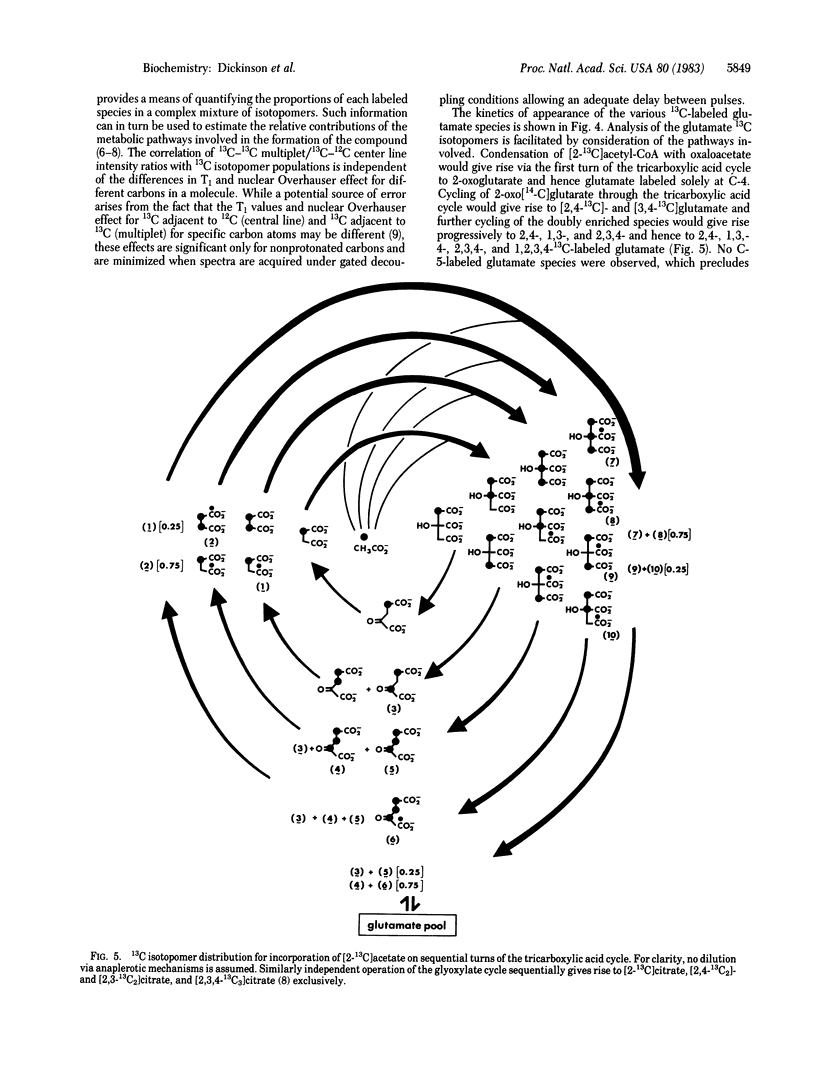
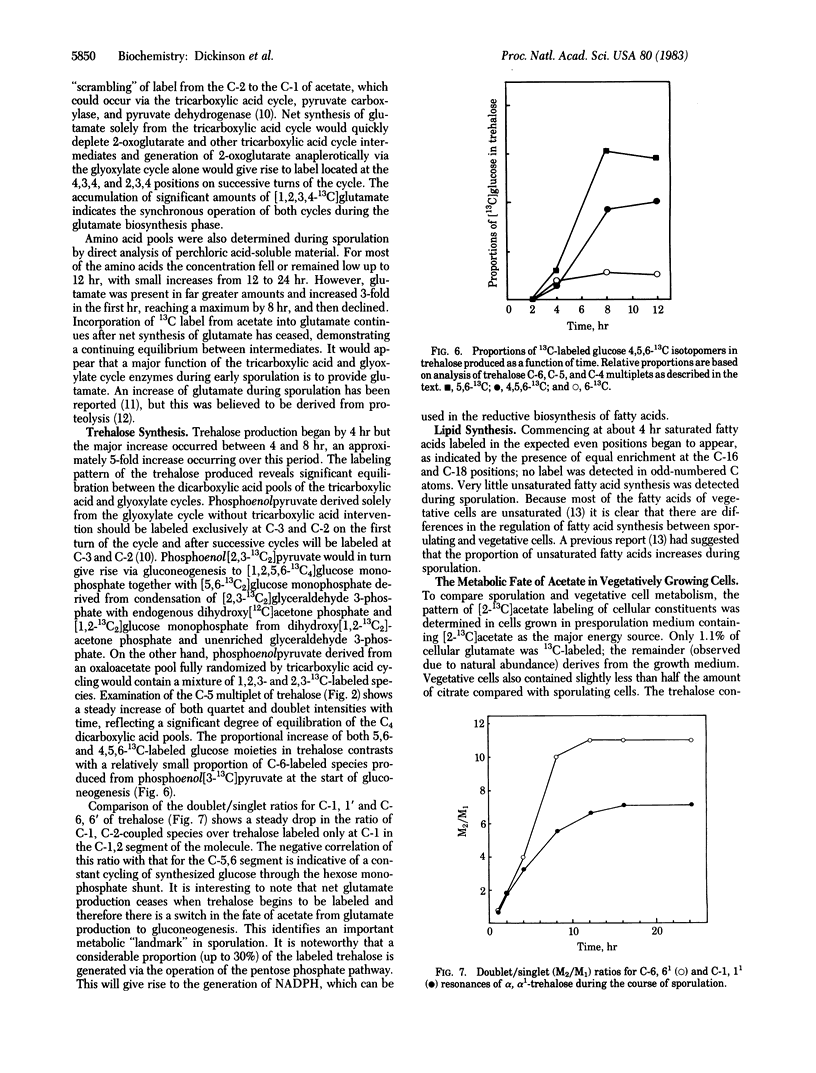
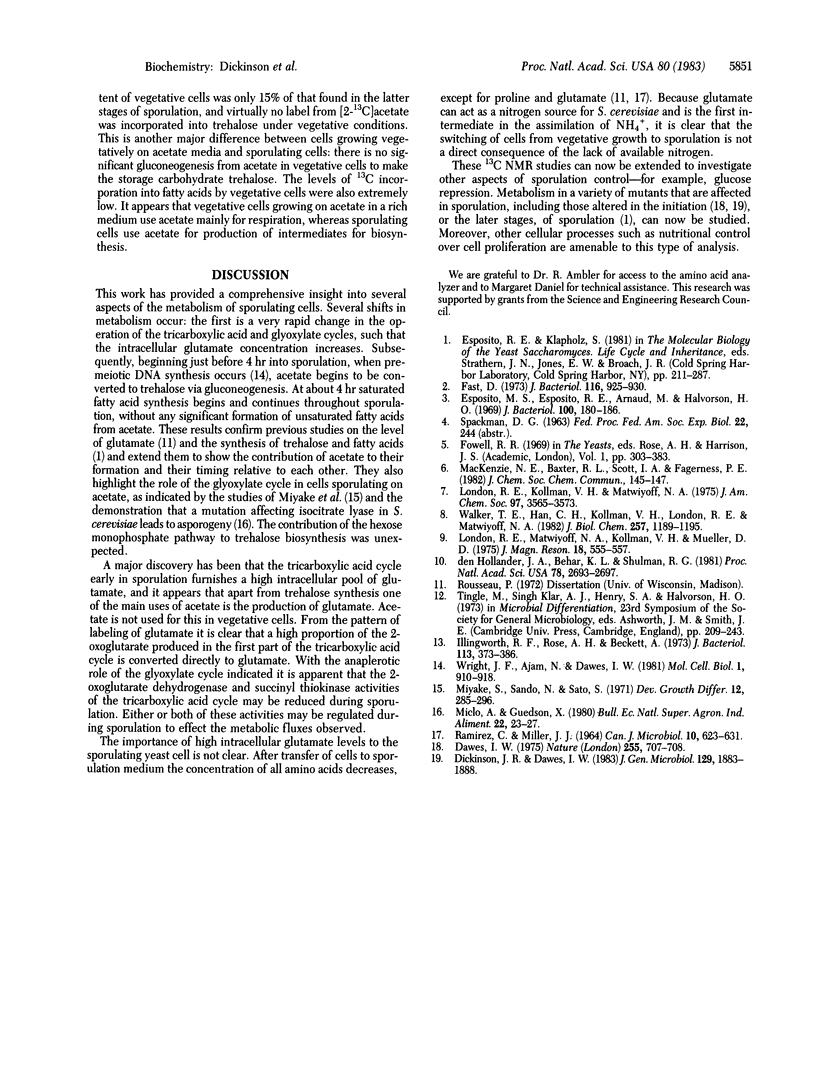
Selected References
These references are in PubMed. This may not be the complete list of references from this article.
- Dawes I. W. Study of cell development using depressed mutations. Nature. 1975 Jun 26;255(5511):707–708. doi: 10.1038/255707a0. [DOI] [PubMed] [Google Scholar]
- Esposito M. S., Esposito R. E., Arnaud M., Halvorson H. O. Acetate utilization and macromolecular synthesis during sporulation of yeast. J Bacteriol. 1969 Oct;100(1):180–186. doi: 10.1128/jb.100.1.180-186.1969. [DOI] [PMC free article] [PubMed] [Google Scholar]
- Fast D. Sporulation synchrony of Saccharomyces cerevisiae grown in various carbon sources. J Bacteriol. 1973 Nov;116(2):925–930. doi: 10.1128/jb.116.2.925-930.1973. [DOI] [PMC free article] [PubMed] [Google Scholar]
- Illingworth R. F., Rose A. H., Beckett A. Changes in the lipid composition and fine structure of Saccharomyces cerevisiae during ascus formation. J Bacteriol. 1973 Jan;113(1):373–386. doi: 10.1128/jb.113.1.373-386.1973. [DOI] [PMC free article] [PubMed] [Google Scholar]
- Miyake S., Sando N., Sato S. Biochemical changes in yeast during sporulation. II. Acetate metabolism. Dev Growth Differ. 1971 Feb;12(4):285–296. doi: 10.1111/j.1440-169x.1971.285_n.x. [DOI] [PubMed] [Google Scholar]
- RAMIREZ C., MILLER J. J. THE METABOLISM OF YEAST SPORULATION. VI. CHANGES IN AMINO ACID CONTENT DURING SPOROGENESIS. Can J Microbiol. 1964 Oct;10:623–631. doi: 10.1139/m64-082. [DOI] [PubMed] [Google Scholar]
- Walker T. E., Han C. H., Kollman V. H., London R. E., Matwiyoff N. A. 13C nuclear magnetic resonance studies of the biosynthesis by Microbacterium ammoniaphilum of L-glutamate selectively enriched with carbon-13. J Biol Chem. 1982 Feb 10;257(3):1189–1195. [PubMed] [Google Scholar]
- Wright J. F., Ajam N., Dawes I. W. Nature and timing of some sporulation-specific protein changes in Saccharomyces cerevisiae. Mol Cell Biol. 1981 Oct;1(10):910–918. doi: 10.1128/mcb.1.10.910. [DOI] [PMC free article] [PubMed] [Google Scholar]
- den Hollander J. A., Behar K. L., Shulman R. G. 13C NMR study of transamination during acetate utilization by Saccharomyces cerevisiae. Proc Natl Acad Sci U S A. 1981 May;78(5):2693–2697. doi: 10.1073/pnas.78.5.2693. [DOI] [PMC free article] [PubMed] [Google Scholar]


